Chmod Octal Permissions

Understanding Linux Permissions And Chmod Usage
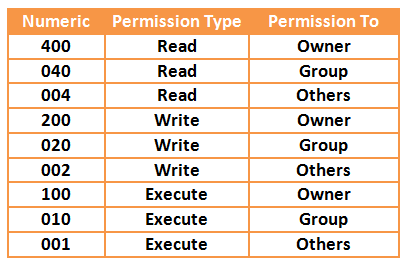
Your Own Linux Chmod Basics Of Files Directories Permissions And Use Of Chmod

Common Bash Commands

How To Use Linux File Permissions And Ownership On Alibaba Cloud Ecs Dzone Open Source

Setting Permissions Using Octal Notation

Linux Permissions An Introduction To Chmod Enable Sysadmin
Chmod 775 file chmod 776 file chmod 777 file chmod 774READ MORE.

Chmod octal permissions. Unlike files, a directory has files in it. It is common to use the basic chmod command to change the permission of a single file. Chmod 700 /path/to/file chmod 666:.
Chmod provides two types of syntax that can be used for changing permissions. So for example, using the table above, we can see that the file permissions -rwxrwxrwx can be represented in octal as 777 (because each rwx translates to an octal digit 7). Chmod +w * - Adds write permission for user to all files in current directory.
The chmod command can be used with either a text-based argument or 3 octal digits (see note 1) to change the permissions on a file.An example of the text-based command to add "read" permission for group members and others to a file named foo is:. The optional leading digit, when 4 digits are given, specifies the special setuid, setgid, and sticky flags. Similar to above commands, we can also remove or unset linux sticky bit special permission with chmod.
The syntax for changing the file permission recursively is:. The rightmost digit represents the permissions for the others. The file’s group creator (group) has read permissions:.
Here is the equivalent command using octal permissions notation:. Now, let’s see the default permission values for a directory. Chmod changes the permissions of each given file according to mode, where mode describes the permissions to modify.
This command will give read, write and execute permission to the owner. We will explain the modes in more detail later in this article. The permission scheme described above also applies to directories.
In symbolic notation,. The three rightmost digits define permissions for the file user, the group, and others. You can use the chmod command to set permissions in either of two modes:.
When we set setuid to a file, we do the following in the terminal:. We will practice by creating an empty file in our home directory:. Owner can read, write and execute;.
To sum up, a file with permissions -rwxr-xr-x is a plain file with the following permission bits set:. Chmod command is used in two ways :. To meet our goal, we will run:.
Mode can be specified with octal numbers or with letters. Others can read, write and execute;. Chmod a+rwx Chmod example (octal):.
How to use Check the desired boxes or directly enter a valid numeric value (e.g. Chmod -c 666 /path/to/file chmod 644:. The three digits of the chmod code set permissions for these groups in this order:.
How to get octal file permissions on Linux/Unix command line. The second way to represent the same permissions is by using octal numbers. Obtaining a specified "Octal Value" usually starts with a file's "Symbolic Value", and transmuting it to it's corresponding number value.
Chmod u+s filename This works fine. Add the octal numbers for the permissions you want. Chmod octal value file-name.
Chmod never changes the permissions of symbolic links;. The chmod command enables you to change the permissions on a file. NDG Linux Essentials 2.0 Chapter 17 Exam Answers Which of the following commands set “other” permissions on file to r-x?.
Read and execute would have 5. To assign reasonably secure permissions to files and folders/directories, it's common to give files a permission of 644, and directories a 755 permission, since chmod -R assigns to both. Here the digits 7, 5, and 4 each individually represent the permissions for the user, group, and others, in that order.
Chmod Calculator is a free utility to calculate the numeric (octal) or symbolic value for a set of file or folder permissions in Linux servers. The chmod system call cannot change their permissions. Here’s a chmod example using for setting permissions so that:.
To give owner, group and everyone else read and write permission on file. Numerical permissions The chmod numerical format accepts up to four octal digits. Having looked at the file permissions and how to view them, let’s no focus on how to modify these permissions.
You can change permissions using alphanumeric characters (a+rwx) or with octal numbers (777). View (u)ser, (g)roup and (o)thers permissions for chmod 644 (chmod a+rwx,u-x,g-wx,o-wx) or use free online chmod calculator to modify permissions easily. When we use the chmod command later on, you’ll see that you can change the permissions using either symbols or octal numbers.
The syntax requires three octal digits, each representing the owner, group, and other permissions, respectively. The leftmost set/triad, in this case 7 or (rwx), defines user/owner (u) permissions, the second from the left - 6 or (rw-) - group (g) permissions, and the rightmost - 4 or (r--) - permissions for others (o). To change file permissions of a file use the syntax below.
Chmod is used to make changes:. Everyone can read, only owner can write. The chmod command uses a three-digit code as an argument.
An absolute form using octal to denote which permissions bits are set e.g:. The Linux command to change permissions on a file or directory is chmod, which we like to read as change file mode. Syntax to change the permission in Octal Notation:.
To remove sticky bit permission using octal method, you just need to avoid using "1" while applying the permission to the directory or file For example, here linux sticky bit is set on "marketing" directory:. An essential program that benefits from using octal notation is the chmod command. Each digit is a combination of the numbers 4, 2, 1, and 0:.
Chmod u+r,u-w,g=o myfile Octal Modes. The file mode creation mask (sometimes referred to as "the umask") is a three-digit octal value whose nine bits correspond to fields 2-10 of the permission flags. Hence the permission of the file will be represented as 751.
Run those together and pass them to chmod like this:. For the owner to have read, write, and execute, we would have a value of 7. To change permission using the Linux chmod command we have to follow some syntax and rules.
This is illustrated in the calculation below. The chmod command enables you to change the permissions on a file. File permissions Use the chmod command to set file permissions.
The tool will provide you with an octal code that corresponds to these permissions which can then be applied to relevant directories and files with chmod. This quick tutorial shows how to use the stat command to view octal file permissions. Running chmod 770 on project-a gives us the permission set we want:.
For example, to change file permissions of a file file1.txt, to say rw-r--r-- execute:. Learn how chmod command is used to manage Linux permission levels (user, group and other) and types (read, write and execute) step by step with practical examples. Octal (numeric) Permissions Notation.
For example, for setting read, write & execute permissions for the owner, read & write permissions for its group, and no permission for others, to a hello.txt file, we will execute the following command:. The other, symbolic notation, which uses letters and symbols to define which permissions are set. The leftmost digit represents the permissions for the owner.
We will use chmod(1) (which means “change mode”) to set the permissions on the example file. Using the Chmod Command The most popular way of changing a file's permissions is by using octal notation with the chmod command. The middle digit represents the permissions for the group members.
Octal Representation Sometimes, you'll see permissions referred to numerically in base 8 octal (i.e. 777 ) or symbolic notation (e.g. Any omitted digits are assumed to be leading zeros.
Sets the permission for owner, group and others with octal values , 4 for read , 2 for write , 1 for execute and any sum of these number to get cumulative permissions. You can use the chmod command to set permissions in either of two modes:. It takes the following syntax:.
In octal mode, permissions are specified with a three-digit octal number. However, you may need to modify the permission recursively for all files within a directory. We can use two ways of calling chmod, symbolic or octal notation.
Rwxrwxrwx ) to see its value in other formats. Absolute Mode - Use numbers to represent file permissions (the method most commonly used to set permissions). Chmod changes the permissions of each given file according to mode, where mode describes the permissions to modify.
Permissions can be presented either in numeric (octal) or symbolic notations. Chmod +x filename.sh to make filename.sh executable. Mode can be specified with octal numbers or with letters.
Instead of letters, the octal format represents privileges with numbers:. You must be superuser or the owner of a file or directory to change its permissions. File access permissions can be modified via the chmod command.
For a directory, whoever has `read'. The permission in octal form is useful for many commands such as chmod command and other sysadmin tasks. Read permission is given the value 4, write permission the value 2 and execute permission 1.
How to Set File Permissions Using `chmod' Files. Group can read, write and execute;. Permissions masking with umask, chmod, 777 octal permissions Ian!.
The read/write/execute permissions can also be described using an octal numeric method:. Chmod Octal Permission for file File/Directory Name e.g – a) If we want to change the permission as per diagram 2.1 we need to execute below command $ chmod 777 filename.txt $ ls -l filename.txt. 0 stands for "no permission.".
A numeric mode is from one to four octal digits (0-7), derived by adding up the bits with values 4, 2, and 1. Octal representation for Permissions. Read/write/execute for user read/execute for group read/execute for other.
Select the permissions you require below. Chmod has two operating modes:. Chmod syntax using octal mode chmod OPTION MODE FILE.
Each of the three digits in our chmod statement — 7, 7, 0 — corresponds to Owner, Group, and Others rights. The chmod command in Linux is used to change file and directory permissions using either text (symbolic) or numeric (octal) notation. These octal values, can be used to change or manage a file or directory's permissions, using a well known command-line-utility called chmod.
We can present permissions as an octal number. R w x 4 2 1. But the octal number 4000 is always associated with setuid (in books etc).
Changing Access Permissions with chmod. I understand (to some good extent) file permissions, the concept of umask, setuid and using octal numbers with chmod.But I still cannot figure out the relationship between the octal number 4000 and setuid. Using octal value & position:.
Using octal syntax for chmod allows setting the absolute permissions for owner, group, and other in one quick command. Use sudo, the find command, and a pipemill to chmod as in the following examples. Using letters is easier to understand for most people.
764 or rwxrw-r--, respectively. The chmod command allows you to change the permissions on a file using either a symbolic or numeric mode or a reference file. Using symbolic values to add, remove the file.
Let's say the directory chmod_directory was created with the default permissions of 755. Chmod 777 What are permissions?. File access permissions can also be changed by a numerical (octal) chmod specification.
The command can accept one or more files and/or directories separated by space as arguments. In this case, ---x--x--x converted to it's Octal or Number value is. The three digits represent user, group, and other permissions in that order.
The name chmod is short for “change mode”. Chmod o-r-w file chmod o+rx file chmod o=rx file chmod o=r+x file Which of the following commands sets “other” permissions on file to r-x?. Another way to specify permission is by using the octal/numeric format.
Another way to use chmod is to provide the permissions you wish to give to the owner, group, and others as a three-digit number. The command chmod changes the file mode bits of each given file according to mode, which can be either a symbolic representation of changes to make, or an octal number representing the bit pattern for the new mode bits. You must be superuser or the owner of a file or directory to change its permissions.
4 stands for "read", 2 stands for "write", 1 stands for "execute", and;. Absolute Mode – Use numbers to represent file permissions (the method most commonly used to set permissions). In such cases, the chmod recursive option (-R or --recursive) sets the permission for a directory (and the files it contains).
Octal Number Representation So that’s how permissions are displayed in Linux using symbols. Rwxrwx--- How does 770 correspond to rwxrwx---?. To determine the mode (or permission settings) of a particular file, use the command `ls -lg filename'.
Add read permission to the user, remove write permission from the user, and set the group permissions to be the same as the other permissions:. Changing file permissions with chmod command using octal notation. This tutorial explains chmod command symbolic notation (r, w, x, a) and octal notation (0, 1, 2, 4) in detail with chmod command arguments and options.
Using chmod command to set file & directory permissions. Group and others will have no permissions, not even read. /home/user> ls -l foo-rwx--x--- 1 user user 78 Aug 14 13:08 foo /home/user> chmod go+r foo /home/user> ls -l foo-rwxr-xr-- 1.

Solved If The Octal Value Of The Permissions On A File Is Chegg Com

Workbook 4 File Ownerships And Permissions Ppt Video Online Download

14 Permission And Modification Times

Understanding Linux Permissions And Chmod Usage

Solved File Permissions In Linux Can Be Set Using A 3 Dig Chegg Com

Linux File Permissions And Chmod Doug Vitale Tech Blog

Linux Free Course Module 3 Chapter 1 File Management File Attributes Permissions

Explain Absolute And Relative Permission Using Chmod Linuxteach

An Introduction To Linux File Permissions Boolean World

Understanding File Permissions 2buntu

Is There A Web Based Converter Between Rwx And The Octal Version Unix Linux Stack Exchange

How To Set File Permissions In Mac Os X Macinstruct

Permissions In Linux Geeksforgeeks

Give Write Access Chmod 644

Linuxvoice Still Using Octal With Chmod Here S Our Guide To File Permissions And Access Controls T Co Dhfcsds54a T Co Cwwekypyr9

Security And File Permission Ppt Download

Translate Rwx Permissions Into Octal Format In Linux

Linux Permissions

Command Line Understanding Chmod Symbolic Notation And Use Of Octal Ask Ubuntu

Understanding Linux Permissions And Chmod Usage

How To Display File Permissions In Octal Format In Linux Kompjuteras

Use Of Chmod Command In Linux Devopsdex

Linux And Unix Chmod Command Knowledge Hub

How To Get Octal File Permissions From Command Line In Mac Os Osxdaily

How To Display File Permissions In Octal Format In Linux Kompjuteras

Understanding Linux Permissions And Chmod Usage

Chmod File Permission And The Octal Notation Netseed

Knowledge Is Power Ubuntu Linux Part 2 Song Cho Medium

Linux Users And Groups Linode
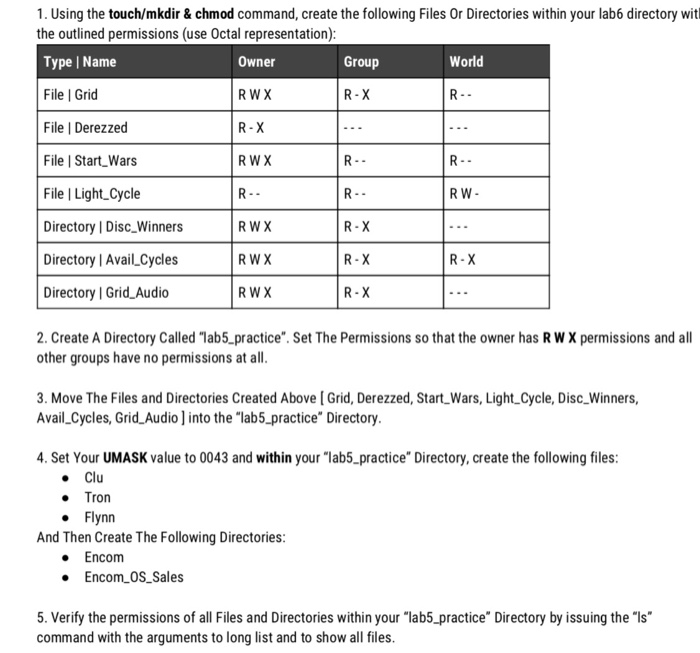
Solved 1 Using The Touch Mkdir Chmod Command Create T Chegg Com
Github Fed Command Line Cheatsheet Unix Command Line Cheatsheet

Chmod Umask Stat Fileperms And File Permissions
Q Tbn 3aand9gcsqtj7hmhwhqltb Dg3vru7pifk7qn5xlkqq4c3n1r24dp3rp4d Usqp Cau

Workbook 4 File Ownerships And Permissions Ppt Video Online Download

How To Display File Permissions In Octal Format In Linux Kompjuteras

How To Use Chmod Command In Linux Explained With Examples

Linux File And Directory Permissions Explained

Javarevisited 10 Example Of Chmod Command In Unix Linux
Q Tbn 3aand9gcq6mtqrr2tbkvj8mt7j61itbsugnnfl3ltc9cdgqfgdswx0kkor Usqp Cau
Q Tbn 3aand9gcr2lfpzbutqythmvbwafnxvyggqfj7hnw6fhh Kcozkk8m5 V7o Usqp Cau

Chmod Help

Chmod Helper Is A Simple Online Tool For Calculating File Permissions Adafruit Industries Makers Hackers Artists Designers And Engineers

How To Set File Permissions In Mac Os X Macinstruct

Linux Chmod Example Linux Hint

Command Line Understanding Chmod Symbolic Notation And Use Of Octal Ask Ubuntu

Learning The Shell Lesson 9 Permissions

Controlling File Permissions With Umask

Chmod Wikipedia

Chmod Calculator Chmod Generator Chmod Command
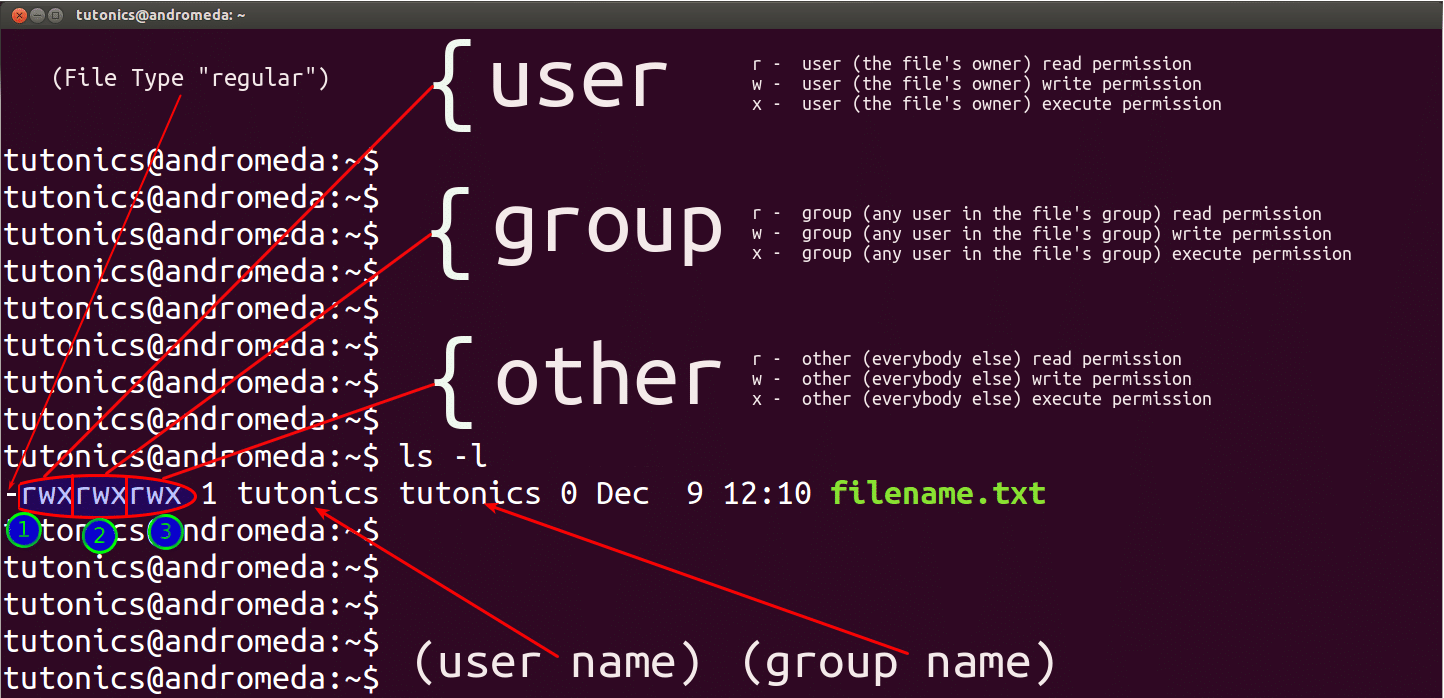
Linux File Permissions Tutorial For Beginners

Linux Permissions Pluralsight

Ectzbrjpkaoq7m

Chmod Command Understanding How To Grant File Permissions

Everything About Chmod Command In Linux Hackerearth

Linux Users And Groups Linode

Bif703 File Permissions Ppt Download

Solved 3 Use Chmod With Octal Number To Forbid All Permi Chegg Com

Workbook 4 File Ownerships And Permissions Ppt Video Online Download

Explained How To Use Chmod Command Complete Guide Youtube

M03t3 2 Intro To Linux Chmod Octal Permissions Youtube

Solved Chmod Can Be Used To Change The Mode Of The File Chegg Com
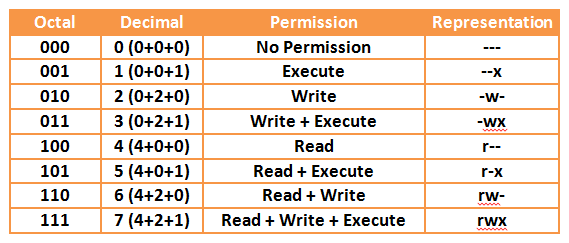
Your Own Linux Chmod Basics Of Files Directories Permissions And Use Of Chmod

Unix Permissions

06 Users Groups And Permissions

File Security

Linux Chmod Command Linuxfordevices

Command Line Understanding Chmod Symbolic Notation And Use Of Octal Ask Ubuntu

Permissions In Linux Geeksforgeeks

Permissions Red Hat Enterprise Rhcsa Rhcse Preparation 0 0 1 Documentation

Csci 330 The Unix System Unit V Permissions All Access To Directories And Files Is Controlled Unix Uses Discretionary Access Control Dac Model Each Ppt Download

Solved What Would Be The Octal You Would Need To Supply T Chegg Com

Solved 3 Use Chmod With Octal Number To Forbid All Permi Chegg Com

How To Get Octal File Permissions On Linux Unix Command Line Nixcraft
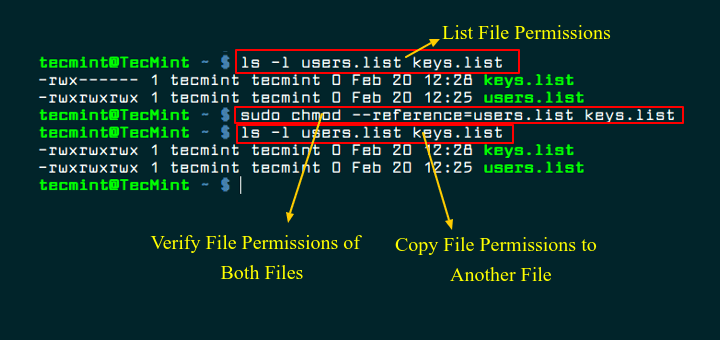
How To Copy File Permissions And Ownership To Another File In Linux

Linux Chmod Command Linuxfordevices
Q Tbn 3aand9gcsmtof5oge8os R2lzc9s8y8xkmcm3kyhtt M Kqujtci7flb3h Usqp Cau

Unix File Permissions Computer Science

Chmod Options Permissions Files Linux Pocket Guide Book

Chmod Cheat Sheet Dan Flood
Linux Chmod Tips

Csci 330 The Unix System Unit V Permissions All Access To Directories And Files Is Controlled Unix Uses Discretionary Access Control Dac Model Each Ppt Download

9 Quick Chmod Command Examples In Linux

Chmod Remove Write Access

Bif703 File Permissions As You Recall From Our Previous Notes That Unix Linux Recognizes Everything As A File Regular Files To Store Data Programs Ppt Download

Understanding Linux Permissions And Chmod Usage

Unix Chmod Cheat Sheet Computer Science Programming Learn Javascript Linux Operating System

Linux Chmod Command Clearly Explained Codedodle

Chmod 777 In Terminal The Command To Make All Changes Affect Every File And Folder Ask Ubuntu

Modify File Permissions With Chmod Linode

Chmod Command In Unix Unix File Permissions Chmod With Examples Chwn Command Chgrp Command Unmask

Linux Chmod Calculator Chmodcalculator

Understanding Linux Permissions And Chmod Usage

Linux Chmod Command Help And Examples

Linux Cheat Sheet

I Made This Chmod Cheat Sheet And Thought It Might Be Useful Linux4noobs

Solved Part 3 Permissions For Files Follow The Instructi Chegg Com

Linux File Permission Javatpoint

Linux File Permissions Tutorial How To View And Change Permission



